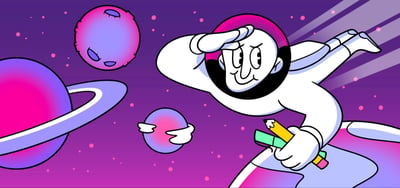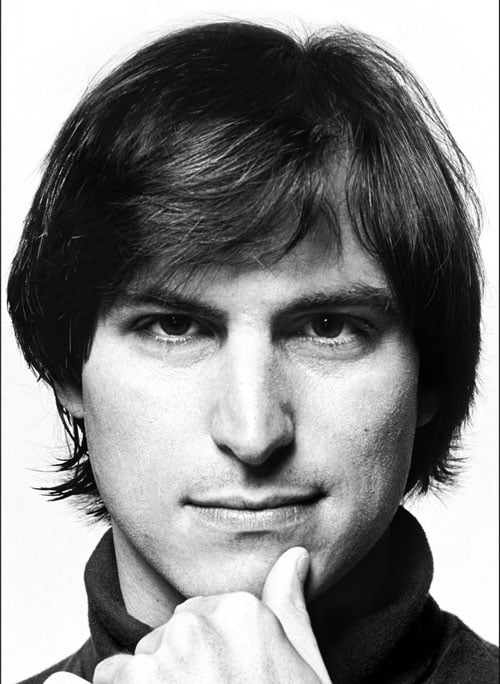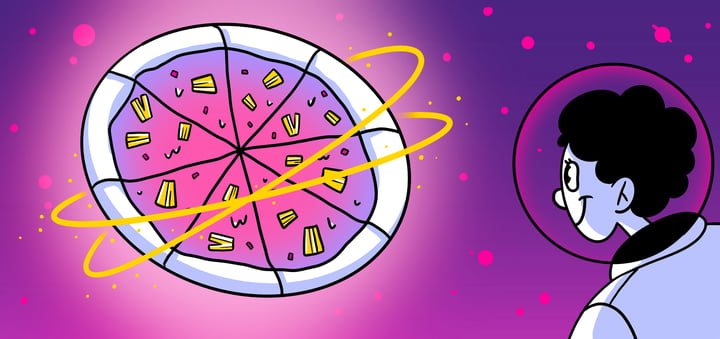Calling all space cowboys! In the realm of concept exploration, we venture beyond the familiar, stretching the boundaries of our creativity to unearth ideas that have the potential to revolutionize, not just improve. This is innovation. But how do we navigate the labyrinth of imagination to arrive at the golden idea?
Innovation refers to creating creative new ideas, products, or ways of doing things. It’s about finding fresh solutions to problems or better ways to meet people’s needs. When someone innovates, they tap into their imagination to develop something original that adds value. It’s not just making simple improvements – it’s about genuine breakthroughs that disrupt existing ways of operating. You know, real aha moments.
Marcus Köhnlein inspired us to question innovation through concept development. The journey starts with a choice: to refine or to explore.

Innovation can happen across all areas – technology, business, design, engineering, you name it. And innovations can range from incremental evolutions of existing things to radical shifts that shake up entire industries.
At its heart, innovation is really about problem-solving and experimentation. It’s being unafraid to take risks and try new combinations to see what sticks. But it’s also understanding people’s true wants and needs. Successful innovation solves real pain points for real humans out in the world. It requires moving from a refinement mindset to one of exploration.
The Crossroads of Creativity is Refinement vs. Exploration
Refinement is the art of polishing and sculpting an existing idea into its most effective form. It’s like tuning a violin to perfection, ensuring each note resonates with crystal-clear precision. However, in the meticulous refinement process, it’s easy to become ensnared in a loop of perfectionism, where we might miss the symphony of possibilities that exploration offers.
On the other hand, exploration is the daring leap into the unknown, a foray into a world brimming with potential. It’s a playground for the intellect where rules are bent and conventions are questioned. When we explore, we aren’t just looking for a solution; we’re on a quest for discovery, knowing that the best solution might be one we never anticipated.
The Innovative Lens
Concept exploration is not merely a buzzword; it’s a philosophy that underscores the importance of vision in the creative process. It implores us to look beyond the horizon to consider the full range of possibilities. It’s about dreaming in bold colors and then picking up the brush to turn those dreams into reality.
As we embark on the creative journey, we are armed with an arsenal of tools: creative exploration, conceptual thinking, ideation techniques, and innovative design principles. Each is a stepping stone, a piece of the puzzle that forms the mosaic of innovation.
Apple’s iPod: An Ode to Exploration
Consider the story of Apple’s iPod. Suppose Apple had confined itself to the path of refinement. In that case, we might have seen the zenith of portable CD players—sleek, functional, perhaps with an intuitive button layout that delighted users. Yet, through exploration, Apple bypassed this incremental step, leaping straight into the digital revolution with the iPod—a device that didn’t just refine music listening; it redefined it.
If Apple had stuck solely to a usability/refinement-first approach in the portable music player industry, they might have crafted a highly functional and sleek portable CD player with an intuitive button layout. While this device could’ve been top-notch in usability and aesthetics, it wouldn’t have birthed the revolutionary concept and impact of the iPod.

—Marcus Köhnlein, Co-Founder and Chairman, Quarero AG
The iPod’s inception wasn’t about enhancing what was already there. Rather, it envisioned a future where your entire music library could fit in your pocket. This vision wasn’t reached through a linear path but through a web of exploration, where many alternative solutions were considered, and the best one shone through.
Steps to Embrace Concept Exploration
To navigate concept exploration effectively, one must be willing to chart a course into the uncharted. Here are some practical steps to guide you:
- Embrace the Crazy Ideas: Your wildest, most ‘out there’ ideas are often the seeds of innovation. Do not discard them—nurture them. As noted in our Helio document, exploring your craziest ideas doesn’t require a heavy investment upfront. It simply requires the courage to acknowledge and play with them.
- Engage in Continuous Discovery: Innovation is not a one-time event but a continuous journey. Regularly engaging with your audience can help you gain insights that refine your creative direction. As Marcus Köhnlein beautifully illustrated, you don’t want to miss the best solution because you are too focused on the good ones.
- Iterate and Validate: Test your concepts. Use exploratory research and conceptual model development to challenge and refine your ideas. Remember, concept validation is not about proving an idea right but ensuring it’s right for your audience.
- Align with Audience Needs: Your target audience’s preferences should guide your exploration. As you ideate and innovate, keep a finger on the pulse of those you aim to serve. By aligning your creative endeavors with their needs, you ensure your ideas resonate and find fertile ground to grow.
Continuous Discovery is the Compass of Concept Exploration
Testing with a Helio audience isn’t limited to refining your product or marketing ideas. You can explore your craziest, wildest ideas without investing heavily in any idea.
Engaging in continuous discovery with an audience allows for an iterative and dynamic approach to innovation. This process enables you to consistently test and validate new concepts, ensuring your creative endeavors align with your target audience’s needs and preferences.
By embracing continuous discovery, you’re not just guessing what might work; you’re gaining real insights and data that inform your decision-making, helping you pivot or progress confidently!
Continuous discovery is not merely a methodology; it’s a compass that points you towards innovation. It allows for a dynamic approach to developing ideas that consistently align with the needs and preferences of your target audience. With continuous discovery, you’re not guessing in the dark. You’re informed by real insights that guide your decisions and help you pivot confidently.
Continuous Discovery Benefits
- Learning from the Market’s Pulse– Scaling continuous discovery demands that we keep our finger on the market’s pulse. It involves regular interaction with your audience to gather feedback, preferences, and behaviors. This iterative process is not a one-off survey or focus group; it’s a sustained dialogue with the market, a commitment to listen and learn from the people whose lives you aim to impact with your innovation.
- Data-Driven Decision Making- When you continuously discover, your decisions become data-driven. Real insights replace assumptions, and customer feedback supersedes guesswork. This doesn’t mean that every piece of feedback will alter your course; rather, it helps you to identify patterns and trends that inform your strategic decisions. Analyzing this data lets you discern which ideas resonate with your audience and need rethinking.
- The Iterative Loop of Innovation– The iterative loop characterizes the journey through continuous discovery. Each cycle involves formulating ideas, gathering feedback, refining concepts, and repeating the process. This loop ensures your ideas are constantly tested and validated against real-world scenarios and preferences. It’s a loop that fosters resilience in innovation, where each iteration brings you closer to a product or solution that genuinely meets the needs of your users.
- Building a Feedback-Rich Environment– To harness the power of a continuous discovery framework, build an environment where feedback is sought and valued. This includes setting up systems and processes that make gathering and analyzing feedback a seamless part of your operation. Utilize platforms that enable you to reach your audience through surveys, A/B testing, user testing sessions, or social media interactions.
Additional Discovery Benefits
- Embracing the Pivot– A pivotal aspect of continuous discovery is the readiness to pivot. This isn’t about indecision; it’s about flexibility. When data shows an idea isn’t hitting the mark, be prepared to shift gears. Pivoting with confidence means you understand that the path to success is rarely a straight line. Adapting to feedback is a strength, not a setback.
- Continuous Discovery as a Cultural Mindset– Perhaps most importantly, continuous discovery should be woven into the fabric of your organizational culture. It should not be the sole responsibility of the R&D or marketing department but a shared mindset across all functions. From the C-suite to the interns, every team member should understand the value of customer insights and their role in driving the company forward.
The Destination is Innovation
With continuous discovery as your compass, the destination is clear: innovation that resonates, solutions that meet real needs, and products that succeed in the market. This compass doesn’t promise a smooth journey; it promises a rewarding one. And as you travel this path, you’re not just navigating through the present; you’re shaping the future.
As we incorporate continuous discovery into our process, we transform how we approach concept exploration. We move from a static development model to a dynamic, responsive approach that values customer feedback as a critical component of success. Continuous discovery is your compass, beacon, and guide in innovation. Let it lead you to ideas that are not only good but are the right fit—ideas destined to succeed.
Unlocking a World of Possibilities: The Journey of Idea Exploration
With a spirit of adventure, let’s venture further into the art and science of concept exploration. Idea exploration isn’t just about thinking outside the box; it’s about questioning whether the box exists. It’s a liberating process that invites various perspectives, disciplines, and experiences to intersect, fostering an environment where innovation thrives.
Sometimes when you innovate, you make mistakes. It is best to admit them quickly and get on with improving your other innovations.

–Steve Jobs, Founder and CEO, Apple
When we dissect the creative process, we find it’s not a straight line but a constellation of thoughts, each with the potential to become a brilliant star. Creative process analysis is about understanding this constellation and identifying the patterns within the chaos. It’s about harnessing conceptual frameworks’ power to structure our thoughts without stifling their wild nature.
Ideation techniques are the tools we wield in this endeavor. From brainstorming to mind mapping, these techniques encourage divergent thinking and the generation of ideas that push boundaries. They help us transition from the ‘what is’ to the ‘what if’, from conventional wisdom to unconventional genius.
The Role of Conceptual Frameworks and Innovation
Conceptual frameworks are the scaffolding for our ideas. They provide a structure that allows us to build upon our thoughts methodically. However, they are not rigid constructs; they are fluid, adaptable, and ready to be reshaped as new insights emerge. They are the lattice upon which ideas can climb, twist, and grow toward the light of realization.

In the case of the iPod, the conceptual framework of ‘1000 songs in your pocket’ guided Apple’s exploration. This simple yet powerful idea provided a clear direction for innovation, set the stage for the development of a product that would change the music industry forever, and lead to an expansive set of innovative products.
Navigating the Maze from Exploration to Execution
But how do we traverse the gap between the ethereal world of ideas and the tangible world of products and services? This is where exploration dovetails with execution. Continuous discovery is key in this phase, ensuring real-world feedback and data inform each step.
Helio can help you explore using an audience of your end users, such as the testing we did on the ad management platform Advent with an audience of advertisers and marketers:
Test Early and Often
Don’t wait for a fully formed idea before testing it. Put out prototypes, however rough, and gauge the reaction. This early testing can reveal invaluable insights that dramatically shift your direction or solidify your conviction in the idea’s potential.
Advent tested their prototype for a new audience targeting feature with an audience of advertising professionals in the United States. The team set up a scenario to see if participants could successfully navigate their prototype feature given specific goals, such as editing the parameters of their target audience:

Advent could track success and drop-off rate across each step of the desired task and see overall success and indirect success results.
Gather Diverse Perspectives
Seek input from a broad range of people. Different backgrounds bring different insights, and this diversity can uncover hidden facets of your idea that you might not have considered.
Advent’s prototype usability testing also included reactionary questions to gauge the perceived success of different tasks. In the example below, over 50% of advertising professionals indicated their task was “very easy.”

But what impact might age have on the app’s user experience? To find out, Advent segmented their data using Helio’s audience filters to focus on ages 45 to 64. This way, they could understand the impact of age on gauging the simplicity of the task.

Advent could compare respondent segments within the sample by filtering for older participants. The older segment had a slightly more difficult time completing the task than younger users.

Adapt and Iterate
You never know when you need to pivot. The path to innovation is rarely straight, and the willingness to adapt is crucial. Iteration is a rhythm. With each beat, refine your idea, test it again, and refine it further.
In the Advent example, the team expected primary actions—such as saving a campaign draft—to be more successful than smaller, tertiary actions.

The sum of Advent’s prototype usability testing culminated in the creation of an Interaction Matrix, showing multiple rounds of usability tests across different actions on each page:

Each colored box in the Interaction Matrix represents the usability of that action in each version of the page.
This Interaction Matrix allowed Advent to track the success of key actions as they iterated on different pages. It also helped the team identify areas of improvement for user interaction and comprehension.
Embracing the Chaos of the Innovation Ecosystem
To thrive in this ecosystem, one must be resilient, open-minded, and endlessly curious. Celebrate exploration. Embrace failure as a stepping stone. Work with your colleagues to continuously pursue the ‘next big thing.’
As we reach the end of our exploration, one thing is clear: the journey to the best ideas is not a solitary trek but a collective expedition. It’s a process that requires us to be bold in our aspirations, rigorous in our methodologies, and inclusive in our collaborations.
Concept exploration is more than a strategy; it’s a mindset. It’s about embracing the unknown, welcoming the unexpected, and cherishing the journey as much as the destination. Whether refining a product, developing a marketing strategy, or simply seeking to innovate, the best ideas are often just one brave exploration away. If you need help or inspiration embracing this mindset, reach out a Helio expert to start a conversation.
How can you embrace concept exploration and let continuous discovery guide you to your best ideas?
Concept Exploration FAQ
Concept exploration is a creative process that goes beyond mere improvement to discover groundbreaking ideas, emphasizing vision and bold thinking in innovation.
Innovation involves creating new ideas, products, or methods that offer fresh solutions and represent significant breakthroughs, rather than just minor improvements.
Refinement is about polishing existing ideas to perfection, while exploration involves daring leaps into the unknown to discover unanticipated solutions.
Practical steps include nurturing crazy ideas, engaging in continuous discovery, iterating and validating concepts, and aligning with audience needs.
Continuous discovery involves regularly interacting with your audience for insights, testing new concepts, and making data-driven decisions in innovation.
Continuous discovery guides the innovation process by providing real insights and data, helping to pivot confidently and align ideas with audience needs.
Testing and iteration are crucial, as they provide real-world feedback and allow for constant refinement and adaptation of ideas.
A mindset embracing the unknown, welcoming unexpected outcomes, and valuing the journey as much as the destination is essential for successful concept exploration.





